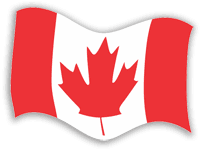|
Lester “Mike” Pearson (1897-1972) was Canada’s greatest diplomat
and the only Canadian ever to win the Nobel Peace Prize. Because
of these chievements he won the leadership of the Liberal Party
and served as prime minister from 1963 to 1968. His government
had very important achievements to its credit, but was often in
difficulty. Many Canadians loved and admired Prime Minister
Pearson. Others thought his best work had been done before he
became prime minister.
Pearson was the son of a clergyman in the Methodist Church of
Canada. He served in World War I, taught history briefly at the
University of Toronto before joining Canada’s tiny Department of
External Affairs (now Foreign Affairs). He advanced rapidly as a
diplomat, serving as Canada’s chief representative to both Great
Britain and the United States. Pearson went into active politics
in 1948 as minister of external affairs and served during some
of the most difficult years of the early Cold War. In 1956 when
Britain, France, and Israel attacked Egypt in a dispute over the
Suez Canal, Pearson played an important role at the United
Nations, helping to arrange a temporary settlement. He won the
Nobel Peace Prize for this effort, which involved one of the
earliest uses of large neutral peacekeeping forces, including
Canadian troops.
Canadians were deeply impressed by Pearson’s record of
achievement as well as his pleasant personality. He easily won
the contest to succeed Louis St. Laurent as leader of the
Liberal party in 1958. It was more difficult for him to displace
the very popular Conservative Prime Minister, John Diefenbaker.
Pearson had to rebuild the Liberal Party and adopt new policies
aimed at younger, urban Canadians. He also agreed to keep a
controversial commitment (which Diefenbaker opposed) to install
nuclear weapons in Canada, a decision important in helping the
Liberals win the 1963 election.
Pearson’s minority governments are best known for introducing
important social programs, most notably the Canada Pension Plan
and Canada’s system of universal health insurance or medicare.
The 1960s were prosperous years in Canada, symbolized by the
happy celebration of the country’s one hundredth birthday in
1967. A great World’s Fair in Montreal, Expo ’67, was a huge
success. Pearson had fought a very hard struggle in Parliament
to have the first distinctively Canadian flag, the red maple
leaf on a white background, created in time for Canada’s 100th
birthday.
Pearson was less successful in world affairs, where middle-sized
countries like Canada were increasingly ignored by the
super-powers at the height of the Cold War. When Pearson spoke
out publicly against the American war in Vietnam, he greatly
annoyed U.S. president Lyndon Johnson. The Pearson government
unified Canada’s army, navy and air force into the Canadian
Forces and tried to promote peacekeeping as a special Canadian
mission. It increased foreign aid and began the process of
making immigration to Canada more accessible to non-Europeans.
The issue of national unity became a difficult problem for
Pearson as French-Canadian nationalism in Quebec increased and
began to express itself in a desire for a separate country.
Faced with terrorist bombings in Quebec as well as interference
in Canadian affairs by the president of France Charles De
Gaulle, Pearson tried to find a middle course that involved a
greater Canadian emphasis on bilingualism and biculturalism. He
tried to strengthen his government by attracting prominent
French Canadians to Ottawa The most important of these, Pierre
Elliott Trudeau, became his successor in 1968 and carried on the
fight against separatism.
The Pearson government could not win a majority in the House of
Commons, and was often under attack from former Prime Minister
Diefenbaker, especially during the flag debate. Several minor
scandals received much media attention. Even some Liberals
thought that Pearson was somewhat weak and disorganized as a
leader.
Many Canadians thought his very best work had been done years
before, at a time when it appeared that Canada could be one of
the more important countries on the world stage. Whether or not
he was an excellent prime minister, Mike Pearson was known
around the world as a spokesman for Canada and its values. His
Nobel Prize was surely impressive — even though it did not lead
to lasting peace in the Middle East. In the 1960s and for years
afterwards, Canadians of all ages took pride in being able to
display the red maple leaf as the emblem of a country that was
bidding farewell to its colonial heritage.
Further Reading: Right Honourable Men: The Descent of Canadian
Politics from Macdonald to Chrétien, by Michael Bliss; Shadow of
Heaven: The Life of Lester Pearson, Volume One and The Worldly
Years: The Life of Lester Pearson, Volume Two, by John English.
Next Instalment: Pierre Elliott Trudeau: Canada’s Fighting Prime
Minister
The Canadian Experience is a 52-week
history series designed to tell the story of our country to all
Canadians. Sponsored by Multimedia Nova Corporation and
Diversity Media Services partners, the series features articles
by our country’s foremost historians on a wide range of topics.
Past articles and author bios are available at
http://www.cdnexperience.ca. The Canadian
Experience is copyright ©2010-2011 Multimedia Nova
Corporation.
|
List of
published "Canadian Experience" articles |
 #20 Lester Pearson: A Nobel Prize and the Maple Leaf Flag
#20 Lester Pearson: A Nobel Prize and the Maple Leaf Flag
